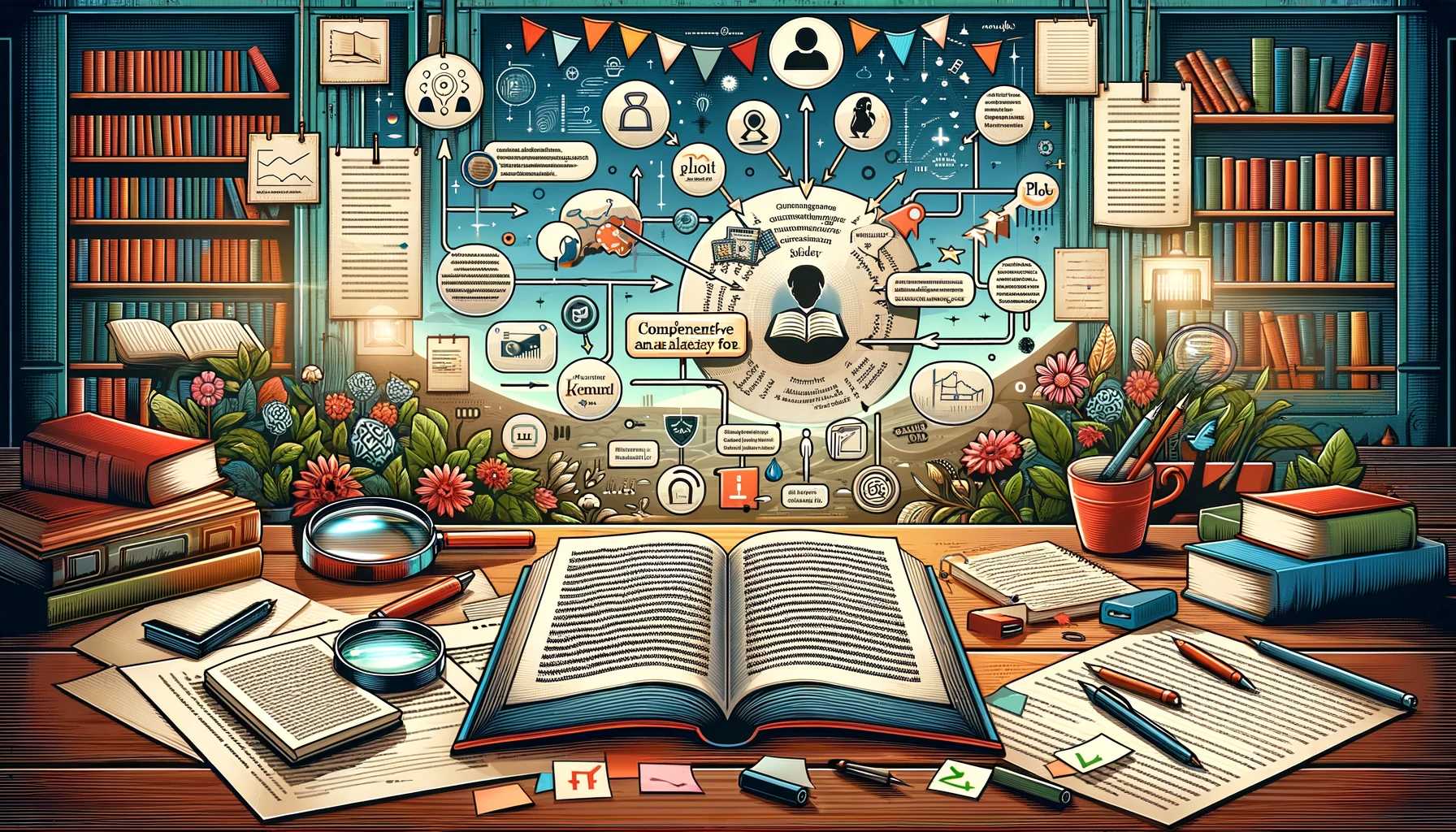How to Analyze a Novel: A Comprehensive Guide for Readers
Hey there, literature lovers and budding critics! Whether you're
a student tackling an assignment or an avid reader looking to delve deeper into
your favorite books, analyzing a novel can be a rewarding and enriching
experience. It allows you to uncover layers of meaning, appreciate the author's
craft, and engage with the text on a deeper level. In this guide, we'll explore
how to analyze a novel step by step, from understanding its basic elements to
interpreting its themes and symbols. Let’s dive in!
1. Start with the Basics: Understanding the Plot
The plot is the backbone of
any novel. It's the sequence of events that unfold in the story. To begin your
analysis, summarize the plot in a few sentences. Focus on the main events and
how they connect.
Questions to Consider:
●
What is the central conflict?
●
How does the plot develop?
●
Are there any subplots?
●
How does the plot resolve?
By summarizing the plot, you
can get a clear picture of the story's structure and identify key turning
points.
2. Analyze the Characters: Protagonists, Antagonists, and
More
Characters are the heart and
soul of a novel. Analyzing characters involves looking at their traits,
motivations, and development throughout the story.
Key Characters to Focus On:
●
Protagonist: The main character around whom the story
revolves. What are their goals, challenges, and growth?
●
Antagonist: The character or force opposing the
protagonist. What motivates them?
●
Supporting Characters: How do they contribute to the
story and influence the protagonist?
Questions to Consider:
●
What are the characters’ strengths and weaknesses?
●
How do their relationships evolve?
●
What are their internal and external conflicts?
●
How do they change by the end of the novel?
Character analysis helps you
understand the human element of the story and how the characters drive the plot
forward.
3. Explore the Setting: Time and Place
The setting provides the
backdrop for the story and can significantly influence the mood and tone.
Consider both the physical location and the time period in which the novel is
set.
Questions to Consider:
●
Where and when does the story take place?
●
How does the setting affect the characters and plot?
●
Are there any significant changes in the setting
throughout the novel?
●
How does the author describe the setting?
The setting can also reflect
the themes of the novel or symbolize broader concepts.
4. Examine the Themes: The Bigger Picture
Themes are the underlying
messages or central ideas that the author explores in the novel. Identifying
and analyzing themes can reveal the deeper meaning of the story.
Common Themes to Look For:
●
Love
●
Power and corruption
●
Freedom and confinement
●
Identity and self-discovery
●
Good vs. evil
Questions to Consider:
●
What are the main themes of the novel?
●
How are these themes developed through the plot and
characters?
●
How do the themes relate to the broader social,
political, or cultural context?
Themes give insight into the
author's intentions and the universal truths explored in the novel.
5. Analyze the Narrative Style: Point of View and Tone
The narrative style includes
the point of view from which the story is told and the tone the author uses.
Both can significantly affect how the story is perceived.
Point of View:
●
First Person: The story is told from the perspective of a
character within the story.
●
Third Person Limited: The narrator knows the thoughts and
feelings of one character.
●
Third Person Omniscient: The narrator knows the thoughts
and feelings of all characters.
●
Second Person: The story is told using "you,"
making the reader a character in the story (rarely used).
Questions to Consider:
●
What point of view is used?
●
How does the point of view influence your understanding
of the characters and events?
●
Is the narrator reliable or unreliable?
Tone:
●
The author's attitude toward the subject and the
audience.
●
Can be serious, humorous, ironic, etc.
Questions to Consider:
●
What is the tone of the novel?
●
How does the tone contribute to the overall atmosphere?
●
Does the tone change throughout the novel?
Understanding the narrative
style helps you appreciate the author's craft and the novel's impact.
6. Investigate the Literary Devices: Symbols, Metaphors,
and More
Authors use various literary
devices to add depth and layers of meaning to their work. Identifying and
analyzing these devices can enhance your understanding of the novel.
Common Literary Devices:
●
Symbolism: Objects, characters, or events that represent
larger ideas.
●
Metaphors and Similes: Comparisons that add meaning and
insight.
●
Foreshadowing: Hints or clues about what will happen
later in the story.
●
Irony: A contrast between expectation and reality.
Questions to Consider:
●
What symbols are present in the novel?
●
How do metaphors and similes enhance the narrative?
●
Are there instances of foreshadowing?
●
How is irony used to convey themes or character traits?
Exploring literary devices
can reveal hidden meanings and enrich your reading experience.
7. Consider the Historical and Cultural Context
Understanding the historical
and cultural context in which the novel was written can provide valuable
insights into its themes, characters, and plot.
Questions to Consider:
●
When was the novel written and published?
●
What historical events or cultural movements might have
influenced the author?
●
How do the characters and events reflect the social and
political climate of the time?
Contextual analysis can
deepen your understanding of the novel's relevance and significance.
8. Reflect on Your Personal Response
Finally, take some time to
reflect on your personal response to the novel. Your unique perspective and
experiences can influence how you interpret the story.
Questions to Consider:
●
How did the novel make you feel?
●
What aspects of the story resonated with you?
●
Were there any parts you found confusing or challenging?
●
How does the novel relate to your own experiences or
beliefs?
Your personal response can
add a valuable dimension to your analysis and make the reading experience more
meaningful.
Wrapping
It Up
Analyzing a novel is a
multifaceted process that involves understanding the plot, characters, setting,
themes, narrative style, literary devices, and context. By exploring these
elements in depth, you can uncover layers of meaning, appreciate the author's craft,
and engage with the text on a deeper level.
Whether you're writing an
essay, participating in a book club, or simply seeking to enhance your reading
experience, these steps can guide you in your analysis and help you derive more
enjoyment and insight from the novels you read.






